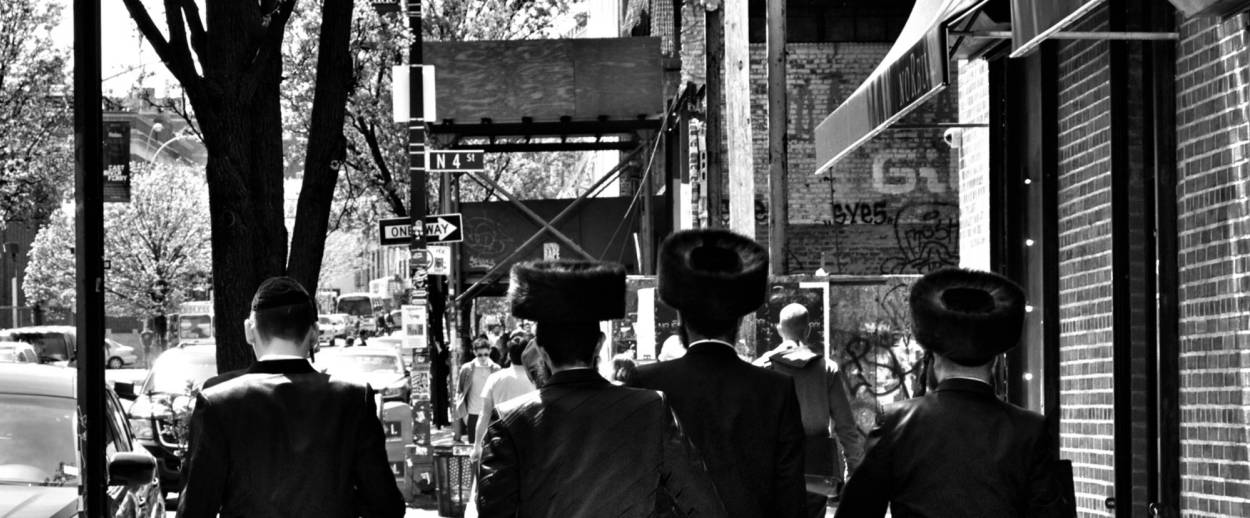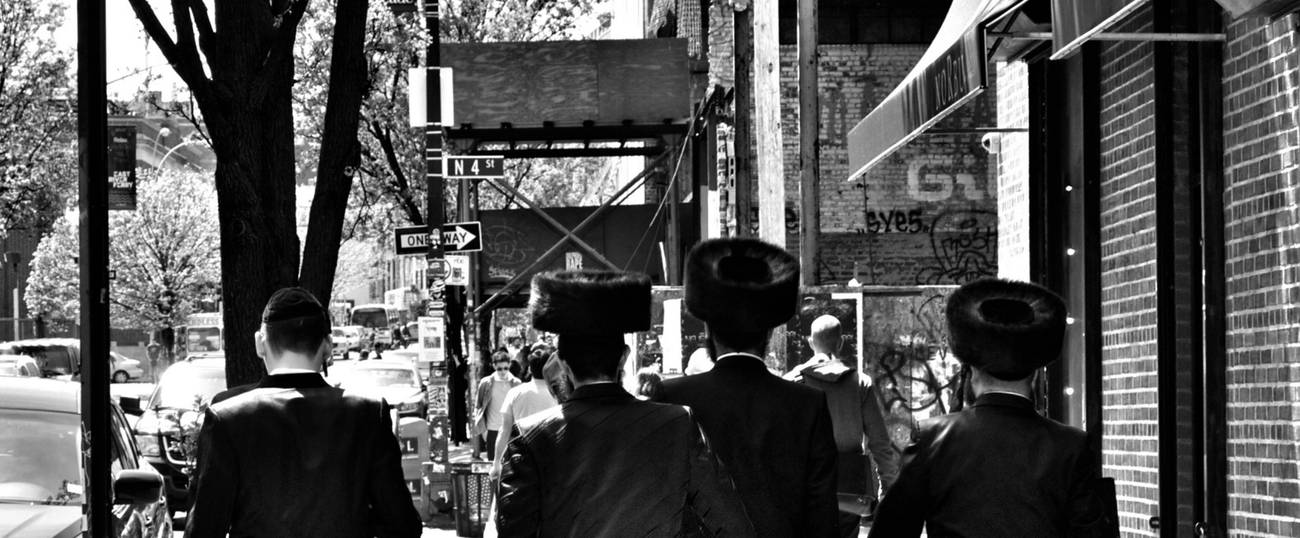Yiddish-Speaking Brooklyn Hits the Small Screen
Former New York gubernatorial candidate Zephyr Teachout is host of ‘On the Grid,’ a new show about Brooklyn’s neighborhoods. She begins in Williamsburg, Borough Park, and Crown Heights.




If you’re going to showcase Brooklyn, where better to start than the neighborhoods of Williamsburg, Crown Heights, and Borough Park where the Yiddish language thrives? That’s exactly what non-profit public access network BRIC TV, in partnership with CUNY’s Center for Urban Research, did for the recent premiere of its show On the Grid with Zephyr Teachout.
In the series, host Zephyr Teachout—the current CEO of Democratic presidential candidate Lawrence Lessig’s PAC who lost the 2014 New York gubernatorial election to Andrew Cuomo—seeks to “redraw” Brooklyn’s outdated traditional neighborhoods by redefining New York’s most populous borough based on its outward cultural and economic characteristics, or “pockets.” The first episode, titled “Yiddish–Speaking Brooklyn” takes a closer look at the thousands of Yiddish speakers in the borough, where Teachout briefly encounters the socioeconomic challenges and ideological distinctions between Hasidic groups, while trying to keep the conversation focused on linguistics. The show’s description is as follows:
See the insular nature of the Satmar sect in Williamsburg, the outward nature of the Lubavitch of Crown Heights and the ultra-Orthodoxy of the Haredi of Borough Park. We finish the journey with a look at the intersecting musical traditions within various Yiddish speaking communities.
During the program, Teachout meets with ex-members of two of the communities, such as Frieda Vizel of Williamsburg and Jacob Gluck of Borough Park, both tour guides, who provide a window into the worlds they left through gently-accented English. In Borough Park, Gluck claims that unlike among secular “Yiddishists,” there is no “contrived effort to retain the language,” and that Yiddish is “natural, it’s organic.” Meanwhile, Vizel describes Williamsburg Yiddish as a “vehicle for faith,” exemplified by children’s toys which stress values of piety and hint at the careful insularity of the Satmar community, to which the language contributes.
While in Williamsburg, Teachout, wearing a yellow sleeveless dress that is barely covered by a scarf, notes, “even though our presence is tolerated, it is not encouraged.” This does not stop her from enthusiastically striking up conversation with welcoming locals throughout her journey, however.
“In places like Williamsburg it’s very difficult to get people to open up to a member of the press,” said the show’s producer Aziz Isham. Even so, he notes, the objective of the program is to tell the stories that are “untold or underrepresented.”
In a visit to the sofer’s (scribe’s) workshop, Rabbi Beryl Epstein, of the Chabad-Lubavitch community in Crown Heights, gives Teachout the run-down on the particularities of tefillin-making. From the women’s section of a hasidic synagogue, Epstein points out the crucial cues which allow one to tell “who’s married [and] who’s still available,” before the obligatory visit to 770 Eastern Parkway (Chabad World Headquarters), where he asserts that Chabad is the original “from Russia with love.” Epstein exemplifies the increased integration of Chabad in the larger Brooklyn communal make-up, explaining that the local language is more “Yinglish” than Yiddish, due to migration and contact with the secular world.
Hannah Vaitsblit is an intern at Tablet.